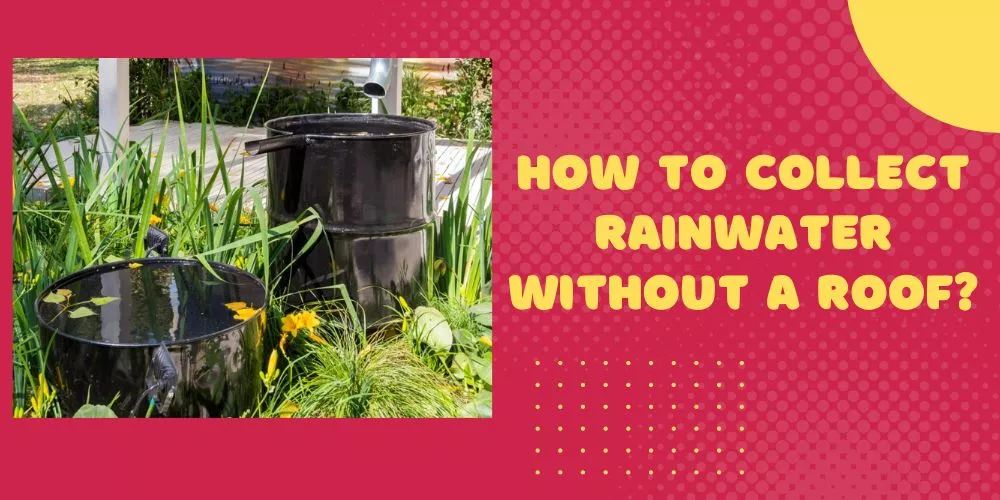Imagine yourself in the great outdoors, surrounded by nature’s beauty and the thrill of adventure. As you embark on your journey, you may encounter situations where you need to rely on your resourcefulness and survival skills.
One such essential resource is salt. Whether you’re lost in the wilderness, camping, or simply looking to expand your knowledge of natural resources, knowing how to find salt in the wild can be valuable.
This article will explore various methods and tips for locating this vital mineral, which plays a crucial role in maintaining our body’s electrolyte balance and preserving food.
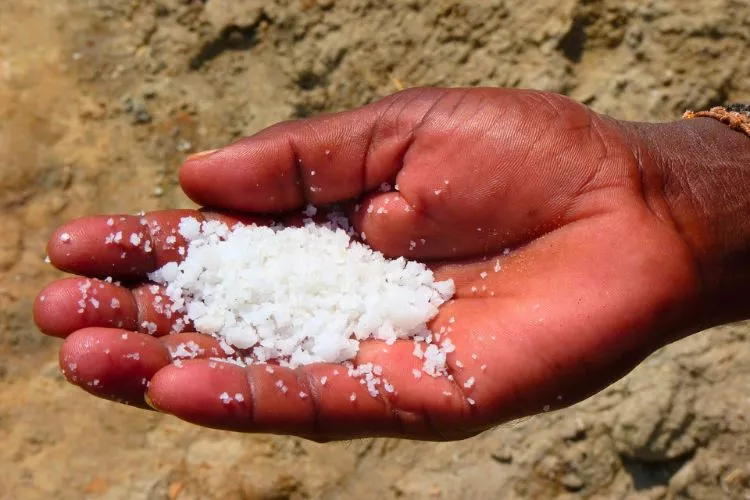
So, let’s dive into the world of natural salt sources and learn how to harness this essential element from the environment around us.
How to find salt in the wild?
Here I will explore various methods for locating salt in the wild, using the following natural sources:
Tapping into Seawater
Seawater is an abundant source of salt, as it contains about 3.5% dissolved salts. To extract salt from seawater, you can simply collect it in a container and let it evaporate under the sun.
The remaining residue will consist of salt crystals you can use for various purposes.
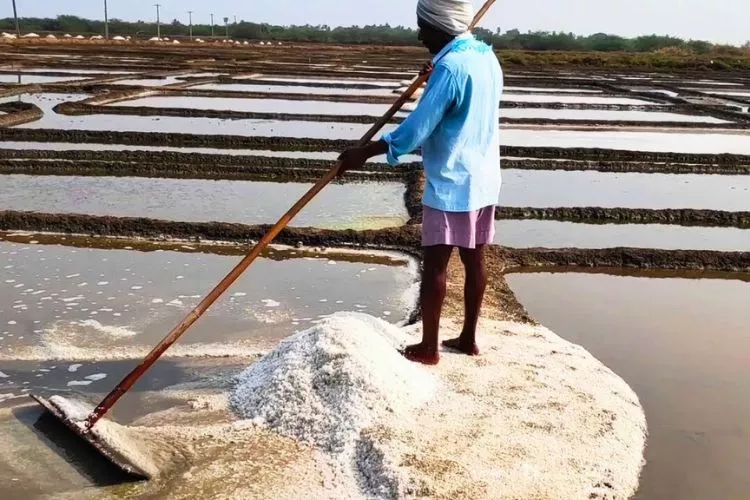
- Collect seawater: Find a clean source of seawater and collect it in a container, preferably a shallow and wide one to increase the surface area for faster evaporation.
- Filter the seawater: Use a cloth or a coffee filter to remove any debris or impurities from the seawater.
- Evaporate the water: Place the container in a sunny spot and let the water evaporate. This process may take a few days, depending on the weather and the amount of water.
- Harvest the salt: Once the water has evaporated, you will find salt crystals at the bottom of the container. Scrape them off and store them in a dry, airtight container for future use.
Sifting Through Sand
In coastal regions, salt can often be found within the sand. Look for areas where seawater has evaporated, leaving behind a crusty layer of salt on the surface.
You can collect this salt by scraping it off the sand and then purifying it through boiling or filtering.
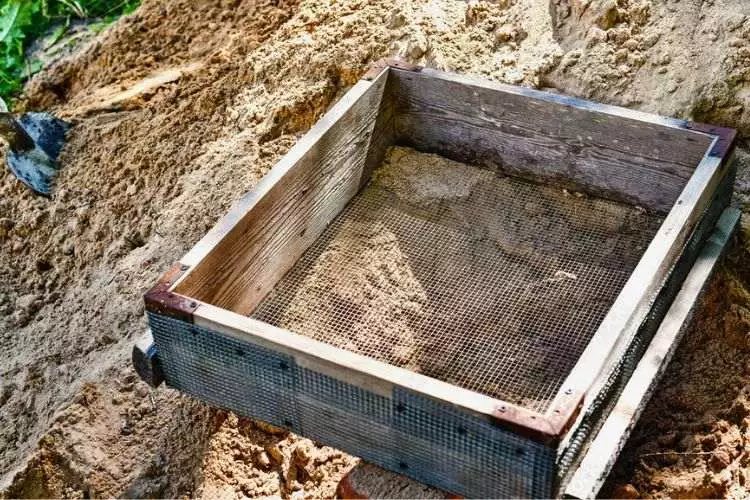
- Locate salt deposits: Search for areas in coastal regions where seawater has evaporated, leaving behind a crusty layer of salt on the surface of the sand.
- Scrape off the salt: Use a flat tool, such as a spatula or a piece of wood, to scrape the salt from the sand.
- Purify the salt: Place the collected salt in a container and add some clean water to dissolve it. Filter the solution through a cloth or coffee filter to remove impurities or sand particles.
- Evaporate the water: Allow the filtered salt water to evaporate, leaving behind purified salt crystals. Store the salt in a dry, airtight container.
Discovering Salt Springs
Salt springs are natural sources of saltwater that can be found in various landscapes. These springs typically have a high concentration of dissolved salts, making them an excellent source of salt.
To collect salt from a salt spring, you can follow the same evaporation process as seawater.
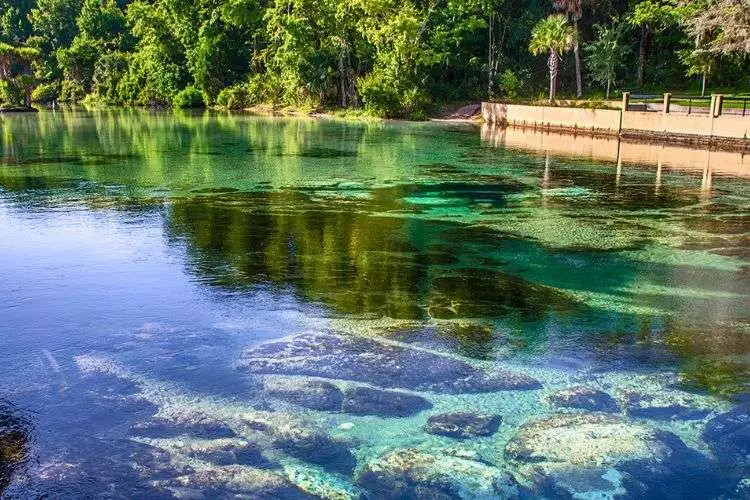
- Find a salt spring: Locate a salt spring in your area by researching geological features or asking locals for information. Salt springs can often be found in regions with volcanic activity or areas with a history of ancient seas.
- Collect the saltwater: Use a container to collect water from the salt spring. Be cautious, as some salt springs may contain other minerals or elements that could be harmful if ingested.
- Filter the saltwater: Pass the saltwater through a cloth or coffee filter to remove any debris or impurities.
- Evaporate the water: Place the container in a sunny spot and let the water evaporate. This process may take several days, depending on the weather and the amount of water collected.
- Harvest the salt: Once the water has evaporated, salt crystals will remain at the bottom of the container. Scrape them off and store them in a dry, airtight container for future use.
Harvesting Plant Leaves
Some plants, such as saltbush or sea lettuce, accumulate salt on their leaves. You can collect this salt by gently shaking or wiping the leaves and then rinsing the collected residue in a small amount of water.
Once the salt has dissolved, you can evaporate the water to obtain the salt crystals.
- Identify salt-accumulating plants: Look for saltbush or sea lettuce, which are known to accumulate salt on their leaves.
- Collect the salt: Gently shake or wipe the leaves to remove the salt residue. Be careful not to damage the plant in the process.
- Dissolve the salt: Rinse the collected residue in a small amount of water to dissolve the salt.
- Evaporate the water: Allow the saltwater to evaporate, leaving behind salt crystals. This process may take a few days, depending on the weather and the amount of water.
- Store the salt: Collect and store the salt crystals in a dry, airtight container for future use.
Extracting Salt from Plant Roots
Certain plants, like the salt cedar, store salt in their roots. To access this salt, you’ll need to dig up the roots, clean them thoroughly, and then boil them in water.
The resulting liquid will contain dissolved salts that can be extracted through evaporation.

- Identify salt-storing plants: Look for plants like the salt cedar, which store salt in their roots.
- Dig up the roots: Carefully dig up the roots of the plant, making sure to cause minimal damage to the surrounding environment.
- Clean the roots: Thoroughly wash the roots to remove any dirt or debris.
- Boil the roots: Place the cleaned roots in a pot of water and boil them. Boil the roots for about 30 minutes to extract the salt.
- Filter the liquid: Strain the liquid through a cloth or coffee filter to remove any remaining root particles.
- Evaporate the water: Allow the saltwater to evaporate, leaving behind salt crystals. This process may take a few days, depending on the weather and the amount of water.
- Store the salt: Collect and store the salt crystals in a dry, airtight container for future use.
Utilizing Animal Blood
In emergencies, animal blood can serve as a source of salt. Blood naturally contains sodium, an essential component of salt.
Consuming small amounts of blood can help replenish your body’s salt levels, but this method should only be used as a last resort and with proper knowledge of how to safely consume it.
Note: This method should only be used in emergencies and with proper knowledge of safely consuming animal blood.
- Obtain animal blood: If you have hunted an animal for food, you can collect the blood during the butchering process.
- Filter the blood: Pass the blood through a cloth or coffee filter to remove debris or impurities.
- Consume in moderation: Drink small amounts of the filtered blood to help replenish your body’s salt levels. Be cautious and consume only what is necessary, as consuming large amounts of blood can be harmful.
Mining Rock Salt
Rock salt is a naturally occurring mineral found in underground deposits. If you encounter a rock salt deposit, you can chip away at the surface to collect the salt crystals. Be sure to clean and purify the collected salt before use.

- Locate a rock salt deposit: Research local geological features or consult maps to find a rock salt deposit in your area.
- Chip away at the surface: Use a hammer and chisel or another suitable tool to carefully chip away at the surface of the rock salt deposit, collecting the salt crystals.
- Clean the salt crystals: Rinse the collected salt crystals in water to remove any dirt or debris.
- Purify the salt: Dissolve the salt crystals in a small amount of water, then filter the solution through a cloth or coffee filter to remove any impurities.
- Evaporate the water: Allow the saltwater to evaporate, leaving behind purified salt crystals. This process may take a few days, depending on the weather and the amount of water.
- Store the salt: Collect the purified salt crystals and store them in a dry, airtight container for future use.
Apart from the methods I mentioned above, there are also a few other ways to find salt in the wild. One such method is consuming foods naturally containing salt, such as seafood, celery, and artichokes.
Another method is extracting salt from inland sources, such as coltsfoot plants. Coltsfoot plants can be burned, and the resulting ash can be leached with water to extract the salt content.
Can you find salt in the mountains?
Yes, it is possible to find salt in mountainous areas. Here are a few ways to locate salt sources in such regions:
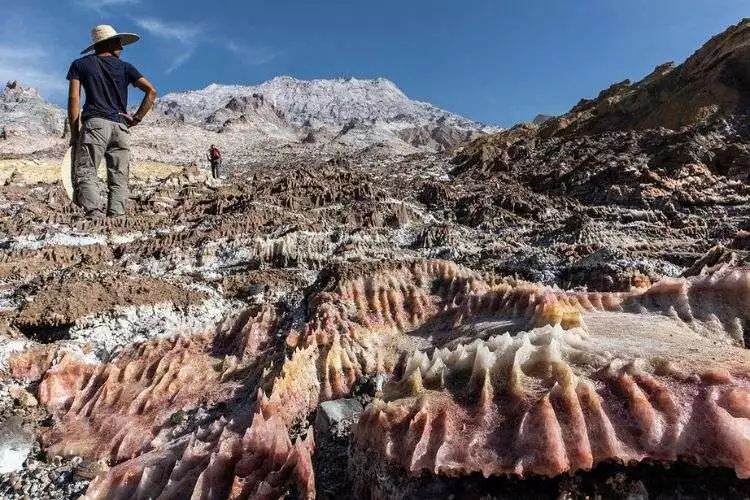
- Rock salt deposits: In some mountainous regions, underground rock salt deposits can be found. These deposits are formed by the evaporation of ancient seas or lakes, leaving layers of salt within the Earth’s crust. If you encounter exposed rock salt formations, you can chip away at the surface to collect the salt crystals. Be sure to clean and purify the collected salt before use.
- Salt springs or salt licks: Animals such as deer, elk, and other wildlife are often attracted to natural salt sources known as salt springs or salt licks. These areas contain mineral-rich water that seeps from the ground, providing essential animal nutrients. If you observe animals frequently visiting a specific location, it may indicate the presence of a salt spring or salt lick. You can collect the saltwater and evaporate it to obtain the salt.
- Halophytic plants: Some plants, like saltbush or sea lettuce, accumulate salt on their leaves or store salt in their roots. These plants can be found in mountainous areas, particularly regions with high soil salinity. Harvesting salt from these plants involves shaking or wiping the leaves or boiling the roots in water to extract the salt.
- Alpine streams: In some cases, streams flowing from higher elevations may carry dissolved salts from rock formations or soil. If you find a stream in a mountainous area, you can collect the water and evaporate it to extract the salt. Remember that this method may yield a lower salt concentration compared to other sources.
- Local knowledge: In certain mountainous regions, indigenous communities or residents may know traditional salt sources or extraction methods. Consult with locals or research the area’s history to learn about potential salt sources.
Remember that salt obtained from natural sources in the wild should always be purified before use. This can be done by dissolving the salt in water, filtering the solution to remove impurities, and then evaporating the water to leave behind purified salt crystals.
By understanding these various methods of finding salt in mountainous areas, you can be better prepared to meet your nutritional needs during outdoor adventures or survival situations.
How to find natural salt licks?
Finding natural salt licks can be challenging, but there are some tips to help you locate them in the wild. One key indicator is observing animals gathering in a particular area, as they may be attracted to a salt lick for its essential mineral nutrients.
However, animals can gather for various reasons, so you may need to investigate the spot further to confirm the presence of a salt lick.
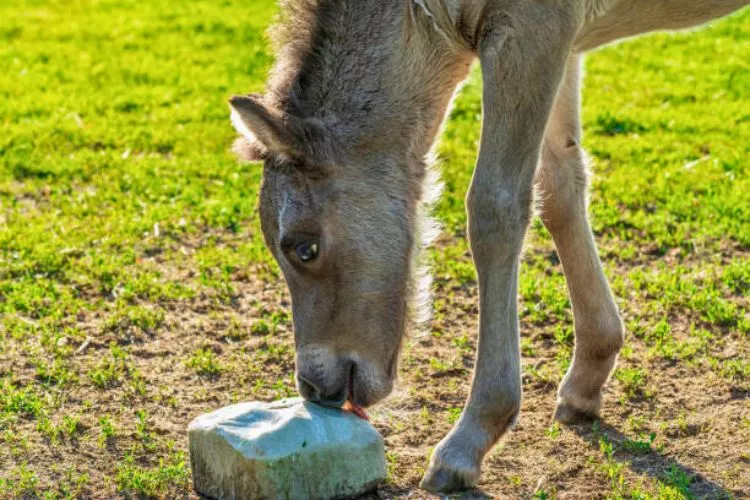
Natural salt licks can be formed by mineral-rich water seeping from the ground, providing essential nutrients for animals. To locate these areas, look for signs of animal activity, such as tracks, droppings, or worn-down vegetation.
You can also search for damp spots on the ground with a salty taste or visible salt deposits.
Once you have identified a potential salt lick location, approach cautiously to avoid disturbing the wildlife. It is also essential to respect the natural environment and avoid contaminating the salt lick.
frequently asked questions (FAQs)
Where do deer get salt in the wild?
Answer: Deer get salt in the wild from natural salt sources called salt or mineral licks. In these areas, mineral-rich water seeps from the ground, providing essential nutrients like sodium, calcium, and magnesium. Deer are attracted to salt licks for their nutritional benefits, and they help maintain the animals’ overall health.
Where can you find salt on land?
Answer: Salt can be found on land in various forms, such as rock salt deposits, salt springs, and salt flats. Some plants, like saltbush or sea lettuce, accumulate salt on their leaves or store it in their roots. Alpine streams may carry dissolved salts from rock formations or soil in mountainous areas. Salt can also be extracted from the ashes of certain plants, like coltsfoot, by burning them and leaching the salt content with water.
How did Native Americans get salt?
Answer: Native Americans obtained salt from various sources, including salt springs, salt flats, and coastal areas. They would collect saltwater and evaporate it to obtain the salt or harvest salt deposits from exposed rock formations. Some tribes also traded with neighboring communities for salt. Additionally, Native Americans would gather salt from plants, such as saltbush, by shaking or wiping the leaves or boiling the roots in water to extract the salt.
Conclusion:
Finding salt in the wild is essential for outdoor enthusiasts and survivalists alike.
By understanding the various natural sources of salt, such as rock salt deposits, salt springs, salt licks, halophytic plants, and alpine streams, individuals can better prepare themselves to meet their nutritional needs in a wilderness setting.
It is also important to respect the natural environment and local wildlife when searching for and collecting salt.
By learning from indigenous communities and historical practices, we can further our knowledge of traditional salt extraction methods and apply them in modern-day survival situations.
Ultimately, knowing how to find salt in the wild enhances our self-sufficiency and connection to the natural world.

